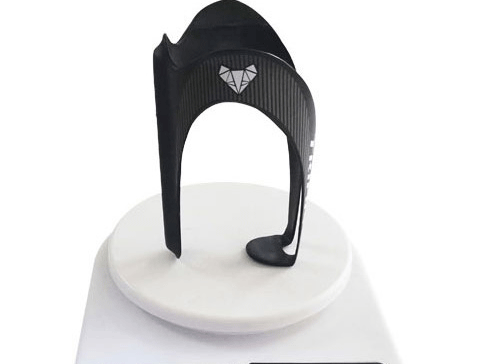
Roaming around on your bicycle during summer can be a refreshing and fulfilling activity. But, with the summer heat, it becomes essential to stay hydrated and have enough water while cycling. Fortunately, technology has brought a solution to this problem in the form of bicycle bottle cages.These cages are an essential accessory, and in this blog post, we will explore what makes them so important. 1. Convenience and Accessibility: One of the primary reasons to invest in bicycle bottle cages is convenience. It allows you to carry the water bottle with you rather than trying to hold it in your hand or shoving it in your pocket. It’s important to stay hydrated during a long ride, and bike bottle cages make it easy to carry a reliable source of hydration. It also enables you to drink water at any point during your ride. This convenience is why bottle cages have become one of the essential bicycle accessories. 2. Better Control and Safety: With bottle cages, you can keep your hands on the handlebars, providing better control and balance on the bike. Being free of having to carry or hold the water bottle, you can focus more on safe cycling practices to reduce the risk of accidents. You can also eliminate the risk of losing a bottle or accidentally dropping it on the road, which can be a safety hazard. 3. Versatlity and Durability: Bottle cages are mainly made of steel, plastic, or carbon fiber, which makes them durable even in the most extreme weather conditions. These cages can hold not only water bottles but any other drink bottles or food items as well. The versatility of bottle cages makes them suitable for any cyclist, whether you are a professional or a beginner. 4. Fits on Most bicycles: Bottle cages come in a range of sizes, shapes, and designs, and fit on most bikes, from the road bikes to mountain bikes. Multiple cages can also be fit on one bike to carry multiple bottles. They provide a variety of mounting options so one can install them on the frame, handlebars or even the saddle. Bottle cages are easy to install and affordable, making it an easy to acquire accessory for every cyclist. 5. Style and Look: Bottles cages are not just a functional accessory; they also add to the bike's styling and aesthetics. They come in a range of colors and designs, which allows you to personalize and customize your bike. You can choose the color that blends with your bike's framework or even match it to your cycling apparel. In conclusion, bicycle bottle cages make for an essential accessory for every cyclist. Their primary function of providing easy access to hydration ensures they play a crucial role in the cyclist's overall performance. With better control, safety, durability, versatility, and style, bottle cages provide an all-round solution to a cyclist's comfort and performance. Their easy installation and affordability make them a must-have bike accessory. Whether you are a beginner or an experienced cyclist, investing in a bicycle bottle cage is an excellent decision. Stay hydrated while enjoying the refreshing ride on your bicycle.
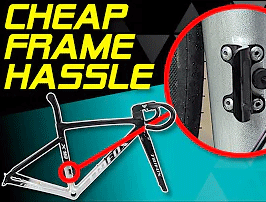
Carbon bike frames have become increasingly popular in recent years for their lightness, stiffness, and aerodynamics. However, one of the biggest challenges with these frames is damage. Carbon frames can be vulnerable to cracks, chips, and dents, leaving riders to wonder if repair is a viable option. Let's start with the pros of repairing a carbon bike frame. Firstly, repairing a carbon frame costs less than buying a new one. Carbon frames can be expensive, and repairing them can be a much more affordable option compared to buying a new one. Secondly, if you're attached to your bike, and it fits you like a glove, repairing it can be emotionally satisfying. Thirdly, repairing rather than replacing a carbon frame is environmentally friendly. It reduces the amount of waste created, which is a great way to help the planet. While there are some pros of repairing carbon frames, there are also some cons you should be aware of. The first and most significant disadvantage is safety. When a carbon frame cracks, it’s hard to spot the damage, and fixing it can lead to further weaknesses in the structure. Moreover, the repair process can’t always be guaranteed and can only be as strong as the manufacturer’s original build. In essence, the structural integrity of the frame is compromised, making it unsafe. Additionally, repairing a carbon frame can be time-consuming, which can mean being without your bike for an extended period. Another factor to consider when thinking about repairing a carbon frame is the type of damage. You should recognize that some types of damage can't be repaired. For example, a crushed tube, or a large hole caused by impact, are irreparable, and the only solution is a replacement. Lastly, aesthetic concerns should also be noted. After a repair job, there may be a visible patch that can be unsightly and be a constant reminder of the accident. Repairing a carbon bike frame is a viable option for minor damage like chips and scratches, and it can be a cost-effective and environmentally friendly way to maintain your bike. However, you should note that repairing a carbon frame comes with some risks; it can compromise the structural integrity of the frame, making it unsafe. Before you decide to repair your carbon bike frame, make sure you seek advice from an experienced bike mechanic or manufacturer to ensure it is safe to ride. And always remember that safety is paramount when it comes to bikes, especially with carbon bike frames
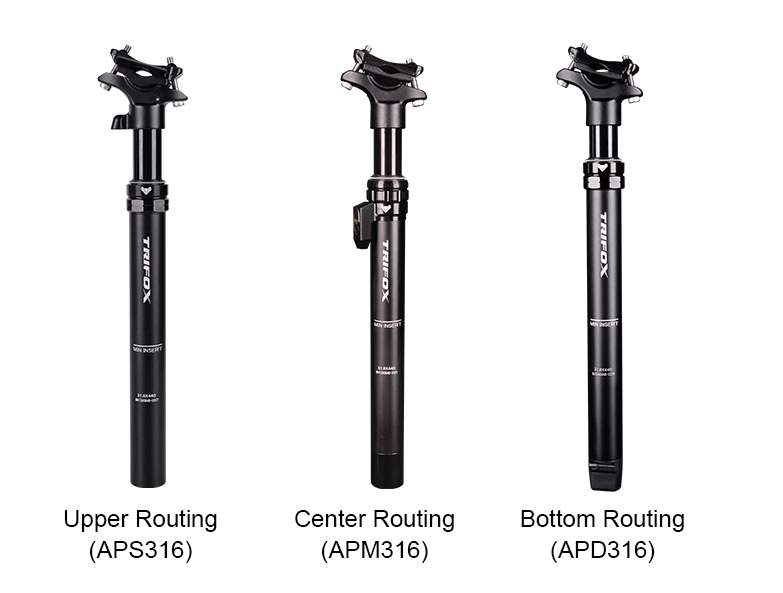
Riding a mountain bike is an exhilarating experience, but it can also be a physically demanding activity. As you traverse through challenging terrains and steep slopes, you need to adjust your seatpost angle to maintain balance and propel forward. This is where adjustable seatposts come into play. Revolutionizing your ride with mountain bike adjustable seatpost can be a total game changer. They offer you the flexibility to adapt to any riding situation on the fly, increasing your control and confidence. In this blog post, we will discuss some of the best adjustable mountain bike seatposts available in the market. 1. Dropper Post AP309 and AP316: If you are looking for an adjustable seatpost that is sturdy, safe, and easy to use, the Dropper Post AP309 and AP316 are perfect for you. They are available in two sizes- 30.9mm and 31.6mm, and both come with a central control reinforced frame head. Additionally, the one-piece fit articulation increases safety and prevents the seatpost from loosening over time. You can also change the cushion angle and adjust the stroke, which makes it suitable for AM/FR/DH riding environments. The Stabl oil pressure spring structure with fine-tuning damping and locking function enhances the overall riding experience. On top of that, the seatpost is equipped with a high-quality aviation level 7075 aluminum, making it lightweight and durable. You can choose a 125mm travel dropper post that comes with a line control switch that you can install on your bike handle. The line length is 1.5m. 2. Super Light Straight Carbon Seatpost SLS21: The Super Light Straight Carbon Seatpost SLS21 is for those who want a sleek, lightweight, and robust adjustable seatpost. With diameters of Φ31.6mm, Φ30.9mm, Φ30.8mm, and Φ27.2mm, this seatpost offers a perfect fit for most mountain bikes. The screw is made of titanium, and the finish is UD matte. This seatpost is ideal for racing, as it offers a weight advantage without compromising on strength or durability. It is easy to adjust and can withstand the rigors of all mountain biking environments. 3. 400mm Carbon Layback MTB Seatpost CDS100: The 400mm Carbon Layback MTB Seatpost CDS100 is a practical, easy-to-use, and dependable seatpost that offers maximum adjustability. The seatpost comes with a layback offset of 20mm (Φ27.2mm / Φ31.6 mm), making it suitable for mountain biking enthusiasts who want a comfortable riding position. It has a sturdy and durable carbon fiber construction that can withstand any terrain. The layback MTB seatpost style offers additional clearance, making it easier for you to navigate challenging terrains. With this seatpost, you can customize the angle according to your preference and enjoy a more comfortable ride. Conclusion: Mountain biking is an adrenaline-packed sport, and adjustable seatposts can enhance that experience. Whether you are a professional racer or a casual rider, the type of seatpost you use can make a huge difference. Adjustable seatposts take the guesswork out of finding the perfect position when climbing steep mountains or descending winding trails. We hope this blog post has given you an insight into some of the best adjustable mountain bike seatposts available on the market. Choose one that fits your needs and hit the trails with confidence. Happy riding!
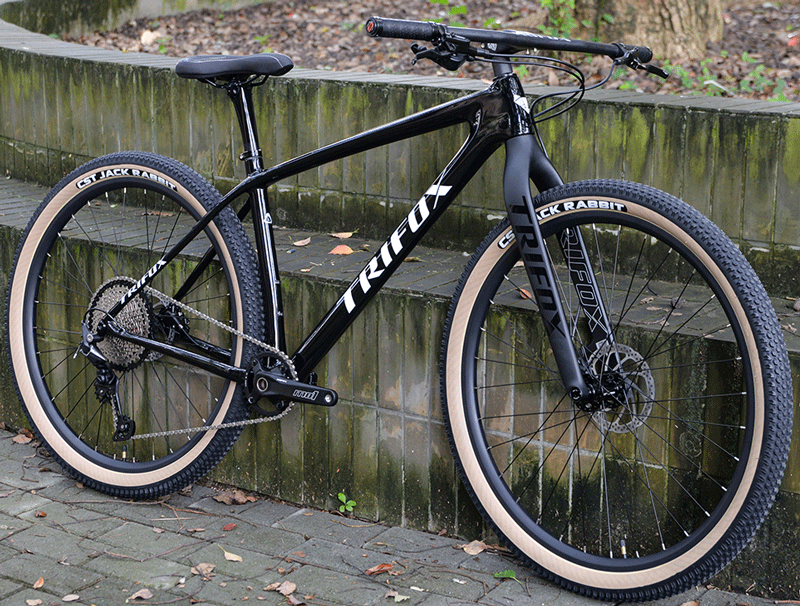
Mountain biking is an exhilarating and challenging outdoor activity that requires the right equipment to tackle the unpredictable terrain. A 29er mountain bike fork is a critical component that provides stability, control, and comfort to riders. It is designed to absorb shocks, vibrations, and impacts, and ensure smooth and safe riding. With plenty of options available in the market, choosing the right fork can be overwhelming. 1. QMK100 Carbon Fork The QMK100 Carbon Fork is a popular choice among mountain bikers who want a lightweight and durable option with a tapered 1-1/8 to 1-1/2 inches head tube. It has an import carbon construction that makes it sturdy and reliable for challenging surfaces. The fork is also suitable for tires that measure up to 29er * 2.1 inches, so you can tackle different trail types. 2. QMK200 Carbon Fork The QMK200 Carbon Fork is an excellent option for mountain biking frames that feature a straight head tube. It is engineered to match most mountain bike frames, guaranteeing compatibility and performance. The fork is also designed to fit tires up to 29er * 2.1 inches, so you can enjoy smooth and comfortable rides on different terrains. 3. TMK100 Carbon Fork Disc Brake The TMK100 Carbon Fork Disc Brake offers reliable stopping power, thanks to its quick-release dropout style. The fork is compatible with disc brakes, ensuring greater control and confidence when riding on different terrains. It has a vertical tube diameter of 28.6mm and weighs 600g, making it a lightweight and practical option for mountain biking enthusiasts. 4. TMK200 Carbon Boost Fork The TMK200 Carbon Boost Fork is an excellent choice for riders who want a versatile and modern option. It is designed to fit tires up to 29er * 3.0 inches, making it great for handling more challenging surfaces. The fork is compatible with disc brakes that use 160/180mm rotors, guaranteeing reliable stopping power. It also has a fork rake/offset of 45mm for enhanced handling and control. Conclusion: Choosing the right 29er mountain bike fork is key to enjoying a seamless ride on different surfaces. As highlighted, the QMK100, QMK200, TMK100, and TMK200 Carbon Forks are top options that combine design, compatibility, and performance. Ultimately, consider your riding style, budget, and personal preferences when selecting the best 29er mountain bike fork for your adventures. With the right fork, you'll have greater control, stability, and confidence when tackling the trails.
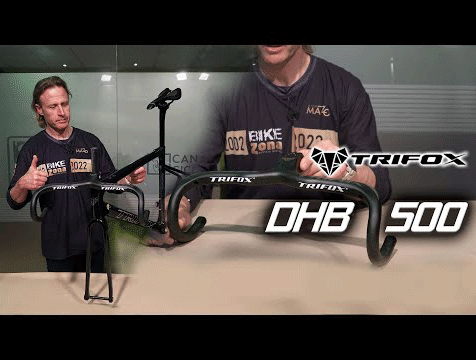
Have you ever thought of enhancing your cycling experience? Well, if your answer is yes, then you may need to take a look at the advantages of upgrading your bike handlebars. The Trifox Drop Butterfly Handlebar, DHB500, is a perfect solution to revolutionize your cycling experience. In this blog post, we will discuss the features of the Trifox Drop Butterfly Handlebar, how it can improve your ride, and why it is an excellent investment for all cyclists out there. 1. Improved Comfort and Stability: The Drop bar DHB500 has a unique design that allows riders to rest their hands in different positions as they ride. This handlebar provides the flexibility that riders need to adjust their hand positions on the bike easily. The butterfly shape of the handlebar ensures an increase in comfort and stability during long rides, reducing the likelihood of getting hand fatigue. This design also helps reduce wrist pain, allowing you to cycle for longer distances. 2. Increased Aerodynamics: The Trifox Drop bar DHB500 comes with an aerodynamic design that decreases wind resistance while riding. You do not need to have an aerodynamic bike to appreciate the benefits of a butterfly handlebar. This design makes a significant difference in how fast you can cycle compared to traditional handlebars. It also enhances your bike's performance, providing you with faster, smoother cycling experience, especially over long distances. 3. Light-Weight Construction: The Trifox Drop bar DHB500 is light in weight, so you don't have to layer your bike's components with heavy parts. The construction is entirely made of lightweight carbon materials, which means it puts less stress on your bike's entire weight. This feature improves the bike's overall handling and ensures an easy installation during the upgrade process. The light-weight construction makes it easier to handle the bike, making it more enjoyable to ride, even on difficult terrains. 4. Aesthetic Appeal: The Trifox Drop bar DHB500 adds a touch of style to any bike. It comes in various sizes and shapes, allowing you to choose one that suits your needs and preferences. The handlebars come in sleek modern designs and color schemes. It is an excellent investment for cyclists who not only want to better their riding experience but also enjoy a beautiful and unique design. 5. Durable and Long-Lasting: Investing in a Trifox Drop bar DHB500 is a wise choice. The construction is made of carbon that is durable and long-lasting. Carbon materials are known for their durability, and the Trifox Drop Butterfly Handlebar is no exception. You do not have to worry about your handlebar losing its quality or shape over time. This investment can serve you for a long time, enhancing your riding experience throughout this duration. Conclusion: In conclusion, adding a Trifox Drop Butterfly Handlebar to your bike will revolutionize your cycling experience, making it more enjoyable, stable, and comfortable. The handlebar's design makes it aerodynamic, lightweight, long-lasting, and aesthetically appealing, making it an excellent investment. An upgrade to a Trifox Handlebar is the perfect way to enjoy a better cycling experience.

Hardtail carbon frames are known for their durability, stiffness, and lightweight construction, making them an excellent choice for mountain biking enthusiasts. With so many options available in the market, finding the perfect hardtail carbon frame for your ride can be an overwhelming task. In this post, we will discuss three of the best hardtail carbon frames available in the market and help you choose the perfect one for your riding style. 1. Carbon hardtail bike frame SDY20: If you're looking for a lightweight hardtail carbon frame, the SDY20 is an excellent option. Weighing only 980g (S-15'') and 1050g (M-17''), it is one of the lightest frames available in its class. This frame is suitable for XC and trail riding due to its lightweight construction. However, it may not be suitable for more aggressive riding styles such as downhill or freeride. One of the best things about this frame is that it offers great value for money and provides riders with plenty of customization options thanks to its compatibility with most forks and tires. 2. Carbon 29er mountain bike frame SDY21: The SDY21 is an excellent option for riders who want a comfortable and durable ride. This frame is suitable for a seatpost with a diameter of 30.9mm, making it an ideal choice for riders who prioritize comfort. The frame is flexible, allowing you to swap between Quick Release and Thru Axle as per your preference. This frame can accommodate 135QR, 142TA, and 148boost, making it suitable for a wide range of riders. This frame is great for XC, trail, and all-mountain riding styles. 3. Carbon fiber 29er frame MFM200: If you're looking for a hardtail carbon frame that is strong yet lightweight, the MFM200 is an excellent option. This frame is made from high-quality carbon fiber, making it strong yet lightweight. Its carefully crafted geometry accommodates 29er*2.1" wheels, with its sleek design. The MFM200 offers clearance for tires up to 2.1″, effectively absorbing road bumps and ensuring a smoother and more comfortable riding experience. This frame is suitable for XC, trail, and all-mountain riding styles. Conclusion: Choosing the perfect hardtail carbon frame for your ride depends on your riding style, budget, and personal preferences. The SDY20, SDY21, and MFM200 are all excellent options and offer a range of features that can enhance your riding experience. Ultimately, the best way to find the perfect hardtail carbon frame is to try them all out and see which one feels the best for you. Remember to consider your riding style, budget, and personal preferences when selecting a hardtail carbon frame to ensure a smooth and enjoyable ride.

As a cycling enthusiast, you know how important it is to stay hydrated during your ride. However, carrying a water bottle can be inconvenient and even dangerous if it isn't securely attached to your bike. That's where the Trifox Carbon Bottle Cage comes in. It's a lightweight, sturdy, and versatile accessory that can help you keep your water bottle within easy reach and prevent it from bouncing around on rough terrain. 1. Lightweight and Durable Design One of the most significant advantages of the Trifox Carbon Bottle Cage is that it's incredibly lightweight. The thick version CBC100 weighs only 28g ± 2g, while the AERO thin version CBC200 weighs only 20g± 2g. It's made of carbon fiber material, which makes it not only super lightweight but also highly durable. You won't have to worry about it breaking or deforming even when you're cycling through rough terrain. 2. Suitable for Various Bikes The Trifox Carbon Bottle Cage is versatile in its design, making it suitable for a wide range of bicycles. Whether you have a mountain bike or a folding bike, the Trifox Carbon Bottle Cage will fit perfectly. Apart from this, it has a sturdy structure that can prevent damage or deformation during your ride. Plus, it's effortless to install, taking only a couple of minutes to mount to your bike. 3. Multiple Color Options Apart from a sturdy design, the Trifox Carbon Bottle Cage also comes in multiple color options. The AERO thin version CBC200 comes in red, silver, yellow, and gray. This feature allows you to match your water bottle cage with your bike or add a pop of color to it. 4. Prevent Water Bottle Slippage The Trifox Carbon Bottle Cage has excellent retention capability, ensuring your water bottle stays in place throughout your ride. There are multiple bottles that fit this cage, and the unique design ensures a tight and snug fit. This feature prevents your bottle from falling even when you're negotiating sharp turns or riding at breakneck speed. Conclusion: If you're looking for a perfect accessory for your bike that can make your ride more enjoyable, look no further than the Trifox Carbon Bottle Cage. Its lightweight, durable, versatile, and retention features make it a must-have item for all serious cyclists. You can choose from various color options and enjoy the added benefit of money-back guarantee. Don't wait any longer- invest in the Trifox Carbon Bottle Cage today and get ready for a ride like no other.

Biking is enjoyed by many individuals for various reasons. Some do it for exercise, while others do it for leisure and relaxation. Whatever your reason is, one thing's for sure - the smoother your ride, the better. This smooth experience can be achieved with the help of the right equipment such as the Trifox AIR Bike Dropper Seatpost AP309. In this blog post, we'll explore everything you need to know about this product, its features, benefits, and how it can help you achieve the perfect ride. The Trifox AIR Bike Dropper Seatpost AP309 is a dropper seatpost that is made of high-quality AL7075 material, making it sturdy and durable. It has a length of 440mm with a 125mm travel, and a Linelength of 500mm, which ensures maximum efficiency and optimal positioning. It has a pipe diameter of 30.9, making it suitable for most bike frames. One of the unique features of this Trifox product is its wiring option, which includes Upper Routing (APS309), Center Routing (APM309), and Bottom Routing (APD309). This allows you to choose the best option that suits your bike frame and wiring preferences. Moreover, it has a Stainless screw and a UD Matte finish that adds a touch of sophistication to your bike. It also comes in black color, which is a popular color choice for most bike enthusiasts. Another great benefit of the Trifox AIR Bike Dropper Seatpost AP309 is its weight. It only weighs 783g/831g/807g (depending on the wiring option), making it easy to carry and maneuver. This is perfect for individuals who like to take their bikes out on challenging trails. The Trifox AIR Bike Dropper Seatpost AP309 also has a dropper tube seatpost style, perfect for those who want to achieve the perfect ride. Prospective buyers of the Trifox AIR Bike Dropper Seatpost AP309 will also appreciate its easy installation process. The seatpost comes with clear installation instructions that make it easy for anyone, regardless of their experience level, to install it with ease. Finally, the most significant benefit you'll get with this Trifox product is its ability to make your biking experience smooth and enjoyable. The dropper tube seatpost style and 125mm travel ensure that you can adjust your seat height quickly and efficiently, providing a comfortable ride. You'll appreciate the improved maneuverability and stability, making it easier to navigate those challenging trails. In conclusion, the Trifox AIR Bike Dropper Seatpost AP309 is an excellent addition to any biker's equipment. It is durable, easy to install, lightweight, has multiple wiring options, and offers an excellent riding experience. You'll appreciate the improved maneuverability and stability, making it easier to navigate those challenging trails. With the Trifox AIR Bike Dropper Seatpost AP309, you can enjoy a smooth and comfortable ride every time.
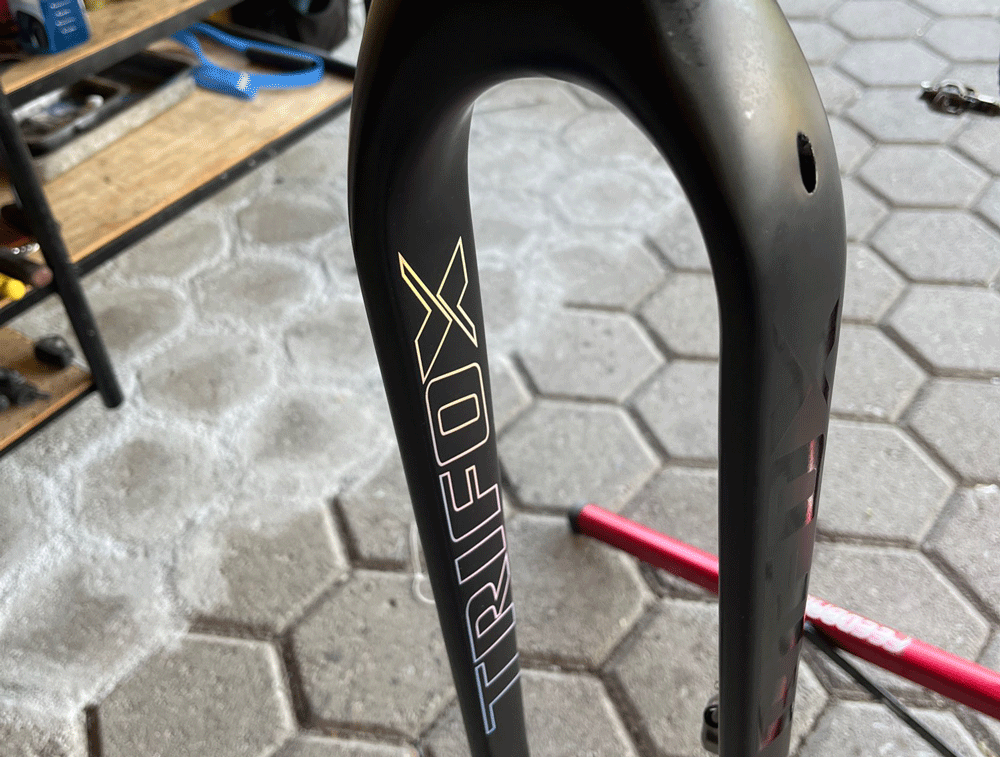
If you're serious about mountain biking, you should know that choosing the right bike fork is essential to your riding performance. A good quality fork enhances your riding experience, making it smoother and more efficient on any terrain. There are different types of bike forks available, and choosing one can be a daunting task. But worry not, in this blog post, we will guide you through the process of choosing the right fork for your riding style. 1. Consider the Riding Style The first thing you need to consider before purchasing a bike fork is your riding style. A rigid fork is excellent for urban and touring biking, but if you’re into mountain biking, a suspension fork may be the right option for you. Depending on the terrain, you may need a fork with a longer travel such as the Trifox 29er Carbon MTB Fork Rigid QMK100 for smooth rides. 2. The Material of the Fork The material of the fork plays a crucial role in the bike's performance. Carbon fiber is one of the most popular materials used for forks because of its lightweight and durability. The Trifox 29er Carbon MTB Fork Rigid QMK200, for instance, is made from the strongest carbon fiber, which offers incredible pressure resistance. It is perfect for riders who want a lightweight fork and maximum performance. 3. Suspension Type Most bike riders prefer a suspension fork that comes with different travel options. The Trifox 29er Carbon MTB Fork Rigid TMK100 is a great option because it offers a 3K carbon weave design that is durable and lightweight. It also features a tapered 1-1/8"-1-1/2" which gives you great control over your ride. A fork with a thru-axle is another excellent option that ensures better wheel alignment and maximum performance. 4. Brake Compatibility The type of brake you use is an essential factor to consider when choosing a bike fork. Each fork is designed to accommodate a specific brake setup, either disc brakes or V-brakes. The Trifox 29er Carbon BOOST MTB Fork Rigid TMK200 is an excellent option for riders who want to use disc brakes because of its compatibility with 160/180mm rotor brakes. 5. Consider the Weight of the Fork The weight of your bike affects your riding performance greatly, and your fork makes a considerable contribution to it. The Trifox 29er Carbon MTB Fork Rigid QMK200 is one of the lightest forks available, weighing only 550g. It is perfect for riders who are conscious about bike weight and don't want to compromise on performance. Choosing the right bike fork is essential to ensuring a smooth, comfortable, and performance-enhancing ride. Consider your riding style, the material of the fork, suspension type, brake compatibility, and the weight of the fork. Don't forget to purchase from a reputable dealer and spend time looking for a reliable brand such as Trifox. With the right fork, you'll have one of the best bike riding experiences on any terrain. Happy riding!

















